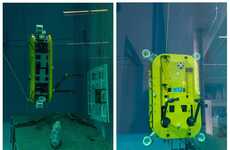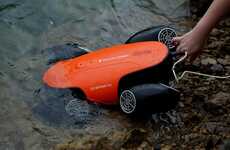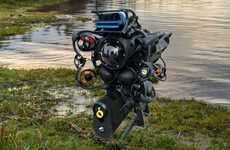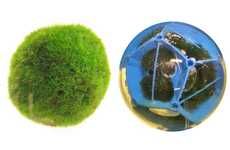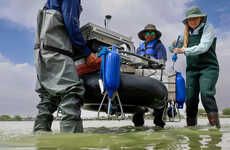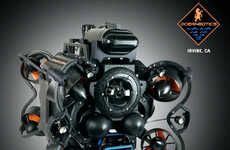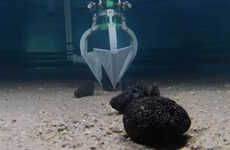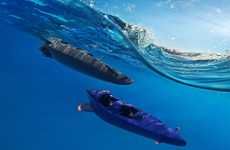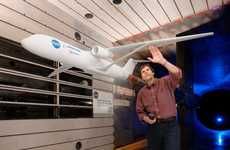
This Research Robot Will Study Microbes Living Beneath Lake Yellowstone
Rahul Kalvapalle — April 12, 2016 — Tech
References: engineeringfordiscovery.org & gizmag
Scientists are making use of an innovative and high-tech research robot that is designed to be fully capable of exploring the deep waters of Yellowstone National Park in order to better understand the complex and fascinating microbes that dwell beneath the surface of Lake Yellowstone.
The robot will be fitted with high definition cameras that will send clear images of the lake floor to scientists. It is also equipped with a 5-function electric arm in addition to a temperature sensor, water sampling module as well as an array of equipment designed with the specific goal of being able to analyze hydrothermal fluids.
Ultimately, this research robot will enable scientists to gain a whole new insight into the fascinating microbes that live beneath Lake Yellowstone, helping to further knowledge of the area.
The robot will be fitted with high definition cameras that will send clear images of the lake floor to scientists. It is also equipped with a 5-function electric arm in addition to a temperature sensor, water sampling module as well as an array of equipment designed with the specific goal of being able to analyze hydrothermal fluids.
Ultimately, this research robot will enable scientists to gain a whole new insight into the fascinating microbes that live beneath Lake Yellowstone, helping to further knowledge of the area.
Trend Themes
1. Deep-diving Robots - Robots designed for deep-sea exploration and research that can provide unparalleled insights into underwater ecosystems.
2. High-definition Imaging - Advanced camera and imaging technologies that can capture detailed images of underwater ecosystems and organisms.
3. Hydrothermal Fluids Analysis - Tools and equipment that can analyze hydrothermal fluids and geothermal systems to better understand the underlying ecosystem.
Industry Implications
1. Marine Science - The use of deep-diving robots in marine science research to explore and analyze underwater ecosystems and organisms.
2. Environmental Monitoring - The development of advanced imaging and analysis technologies for environmental monitoring and research.
3. Robotics and Automation - The use of advanced robotic technologies for research and exploration in difficult and dangerous environments.
0.4
Score
Popularity
Activity
Freshness


